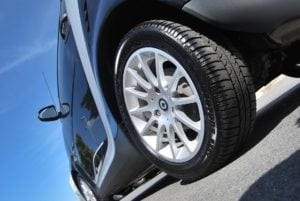 Last year alone, flat tyres were the reason behind more than 180,000 callouts from the AA alone, and as a result, punctures are the biggest cause of breakdown in the UK. As well as the UK’s poor roads being to blame, the lack of spare wheel provisions in newer models (just one third are now fitted with a spare) and reduced tyre changing knowledge amongst modern day motorists are just some of the reasons why a seemingly easy to amend problem stops many in their tracks.
Last year alone, flat tyres were the reason behind more than 180,000 callouts from the AA alone, and as a result, punctures are the biggest cause of breakdown in the UK. As well as the UK’s poor roads being to blame, the lack of spare wheel provisions in newer models (just one third are now fitted with a spare) and reduced tyre changing knowledge amongst modern day motorists are just some of the reasons why a seemingly easy to amend problem stops many in their tracks.
What are run flat tyres?
Run flat tyres offer an array of excellent advantages for those looking to avoid the messy task of changing a wheel and get on with their journeys without punctures getting in the way. The reinforced sidewalls of these tyres allow you to continue driving for up to 50 miles even if air has escaped due to puncture. More and more car manufacturers are fitting run flat tyres as standard in their vehicles to make life easier for their customers, but what do you need to know about the MOT, repair and replacement of run flats? Here we provide a definitive guide to exactly these areas so you can drive with confidence, whatever the day may bring.
Will my MOT requirements change with run flats?
As part of a standard MOT test, by law all four tyres on the car will be checked. Tyres must be within the legal limit of 1.6mm, in good condition, and free from tears, bulges, sidewall cracks and other damage. The same rules apply with run flat tyres. Due to the introduction of a new piece of EU legislation however, from 2012 cars with run flat tyres must undergo further checks to meet the basic requirements of a UK MOT.
Whilst the use of run flat tyres unlocks many advantages, one of the downsides of fitting run flat tyres is that your car must have a Tyre Pressure Monitoring System (TPMS) fitted to alert you of a puncture. Your TPMS is now tested as part of the MOT, and if it does not work properly will warrant a fail. TPMS faults often occur due to its wheel sensors.
Can run flat tyres be repaired?
You may be able to keep going after a puncture but what happens when repair is eventually required? The damage and condition of your run flat tyres will influence whether or not they can be repaired. But as a principle, and in line with the majority of tyre retailers, many will not repair run flats following a puncture despite run flat tyre repair kits being available to trade.
Many manufacturers do not advise the repair of run flats, particularly if the deflated tyre has been driven on. Driving on run flats for an extended period can compromise the strength of the tyre, making replacement a priority. The construction of run flat tyres can also make the identification of secondary damage challenging, another reason why repair is avoided.
Is replacing run flats difficult?
The process of replacing your run flat tyres is more complex than standard replacement. In comparison with standard tyres, run flat tyre models may not be so easily accessible at tyre centres, meaning you may have to wait for the right tyres to be sourced before your vehicle undergoes replacement. Run flat tyres are more expensive than standard tyres due to the great convenience offered, with the latter 30 to 40% cheaper.
Run flat tyres deliver a bevy of excellent benefits when considering safety and convenience, however you must still carry a spare to ensure longer journeys, extending beyond the 50 mile driving limit, can go ahead as planned.
Need a new run flat tyre?
If you are in the Waterlooville, Hampshire area and need run-flat tyre replacement (or any other kind of car or van tyre replacement), we are happy to help – check out our tyre replacement service for further information.



